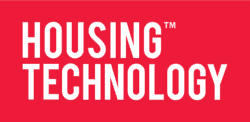Most major IT system failures are preventable – proactive monitoring can detect the early warnings, allowing remedial action to be taken before disaster strikes.
IT support companies have traditionally set different service-level expectations for different customers, usually under a break-fix model, selling time in advance of the customer’s requirements. Meanwhile, the customer continues to carry out moves, configuration changes and additions which go unnoticed by the IT support company until the systems develop problems. This is also when they start to affect the running of the organisation, sometimes catastrophically.
New system management tools are now available that cost-effectively address these issues. Arising faults can be spotted proactively, often before they affect users, and fix times are improved. Savings are also achieved by reducing the time spent on customer sites delivering services and gathering data which, with modern remote support methods, can be securely delivered across the internet.
In the USA, due to the greater distances involved, IT service provision has had to evolve faster than in the UK. This style of proactive support now accounts for 50 per cent of the IT support market; it only accounts for 4 per cent in the UK.
Good IT support is about faster, more consistent and higher quality service at a lower cost. This can either be a direct cost by providing savings on support, or indirect by reducing inefficiencies or internal costs for the customer.
At the most basic level, moving from reactive to proactive support means that the IT support company actively monitors devices and applications across the customer organisation for availability and error notification. Performance reporting is provided for capacity planning and predictive analysis. This not only spots arising problems but also triggers automated support tasks that ensure that the system continues to work efficiently and effectively. It allows the support company to know, not guess, what a customer’s IT performance and requirements really are.
To summarise, some of the benefits that organisations can achieve from proactive support are:
- Maximise return on investment by ensuring that systems are working efficiently, identifying end-user misuse and hence increasing productivity, and minimising IT down-time.
- Ensure system security by ensuring that anti-virus and spam filters are updated, back-ups are carried out reliably, and unauthorised software is not being used.
- Assistance with IT strategy through access to IT budgeting expertise, advance warning of likely expenditure requirements, and qualified justification for system changes.
Proactive support services are without question the future. The question is only how long it takes for the majority of the IT support services sector in the UK to accept that it has to change to embrace it.
Colin Sales is managing director of Montal.


